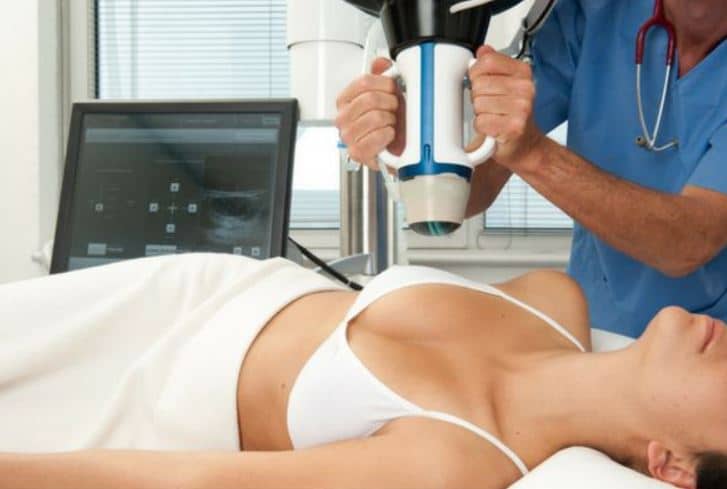Breast lumps are a very common observation which include a wide range of indications that all are summarized into this broad category. The majority of breast nodules are benign (non-cancerous) and are overall harmless without any immediate or serious health concern.
A diagnosis of a breast lump often raises fear of breast cancer. However, there is a low chance that a lump is cancerous: In fact, about 80% of breast lumps turn out to be benign (non-cancerous).
Fibroadenoma are solid and firm nodules which often develop during puberty and thus are most commonly seen in young women. However, they can also develop in later years, even in men, though this happens rarely. The lumps can often be felt as smooth structures which can be easily moved under the skin. Fibroadenoma usually grow to 1-3 cm (0,4 – 1,2 inches).
Occasionally they can grow to more than 5 cm (2 inches), bur whatever their size, they are benign and harmless. However, the larger ones can sometimes cause pain, most commonly just before a period.
Breast cancer is a much more serious condition. Despite the majority of breast lumps turning out to be non-cancerous, breast cancer remains the most common type of cancer in some countries. The UK, for example, where 1 in 8 women are diagnosed during the course of their lives.

Whilst breast cancer can develop at any age it is most often seen in women above the age of 50. Early detection of malignant breast lumps is key for treatment and can significantly increase the chances of full recovery. If left untreated, the cancer will continue to grow and can spread to other body parts through the lymph and blood system and (metastasis). Once, the cancer has spread and invaded other regions of the body the cancer can become life-threatening and chances of cure decrease significantly.
Is a Fibroadenoma a cyst?Making sure it is no breast cancer
Early detection of breast cancer is the most important step in curing the disease. Because malignant lumps often do not cause any specific early symptoms and are mostly painless, the detection of a lump in the breast should be followed up with a physician immediately. In most cases, detailed diagnosis including ultrasound scans, mammography and biopsy will find a benign indication like a fibroadenoma. However, early recognition and treatment of breast cancer with a size of less than 2.5cm (1 inch) has shown impressive 5-year survival rates of 96%.
